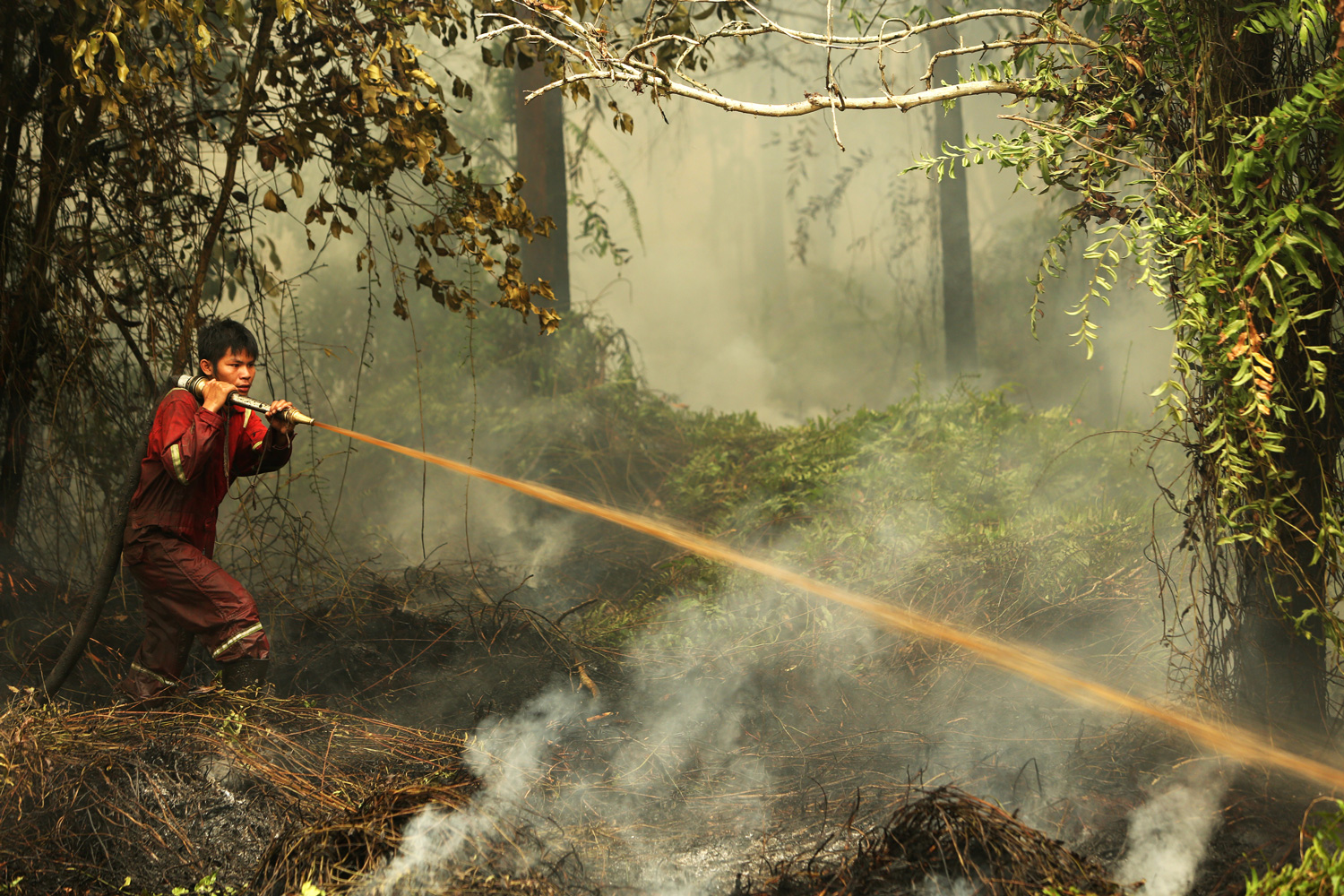
Wildfires in Southeast Asia significantly affect peoples’ moods, especially if the fires originate outside a person’s own country, according to a new study.
The study, which measures sentiment by analyzing large amounts of social media data, helps show the psychological toll of wildfires that result in substantial air pollution, at a time when such fires are becoming a high-profile marker of climate change.
“It has a substantial negative impact on people’s subjective well-being,” says Siqi Zheng, an MIT professor and co-author of a new paper detailing the results. “This is a big effect.”
The magnitude of the effect is about the same as another shift uncovered through large-scale studies of sentiment expressed online: When the weekend ends and the work week starts, people’s online postings reflect a sharp drop in mood. The new study finds that daily exposure to typical wildfire smoke levels in the region produces an equivalently large change in sentiment.
“People feel anxious or sad when they have to go to work on Monday, and what we find with the fires is that this is, in fact, comparable to a Sunday-to-Monday sentiment drop,” says co-author Rui Du, a former MIT postdoct who is now an economist at Oklahoma State University.
The paper, “Transboundary Vegetation Fire Smoke and Expressed Sentiment: Evidence from Twitter,” has been published online in the Journal of Environmental Economics and Management.
The authors are Zheng, who is the STL Champion Professor of Urban and Real Estate Sustainability in the Center for Real Estate and the Department of Urban Studies and Planning at MIT; Du, an assistant professor of economics at Oklahoma State University’s Spears School of Business; Ajkel Mino, of the Department of Data Science and Knowledge Engineering at Maastricht University; and Jianghao Wang, of the Institute of Geographic Sciences and Natural Resources Research at the Chinese Academy of Sciences.
The research is based on an examination of the events of 2019 in Southeast Asia, in which a huge series of Indonesian wildfires, seemingly related to climate change and deforestation for the palm oil industry, produced a massive amount of haze in the region. The air-quality problems affected seven countries: Brunei, Indonesia, Malaysia, Philippines, Singapore, Thailand, and Vietnam.
To conduct the study, the scholars produced a large-scale analysis of postings from 2019 on X (formerly known as Twitter) to sample public sentiment. The study involved 1,270,927 tweets from 378,300 users who agreed to have their locations made available. The researchers compiled the data with a web crawler program and multilingual natural language processing applications that review the content of tweets and rate them in affective terms based on the vocabulary used. They also used satellite data from NASA and NOAA to create a map of wildfires and haze over time, linking that to the social media data.
Using this method creates an advantage that regular public-opinion polling does not have: It creates a measurement of mood that is effectively a real-time metric rather than an after-the-fact assessment. Moreover, substantial wind shifts in the region at the time in 2019 essentially randomize which countries were exposed to more haze at various points, making the results less likely to be influenced by other factors.
The researchers also made a point to disentangle the sentiment change due to wildfire smoke and that due to other factors. After all, people experience mood changes all the time from various natural and socioeconomic events. Wildfires may be correlated with some of them, which makes it hard to tease out the singular effect of the smoke. By comparing only the difference in exposure to wildfire smoke, blown in by wind, within the same locations over time, this study is able to isolate the impact of local wildfire haze on mood, filtering out nonpollution influences.
“What we are seeing from our estimates is really just the pure causal effect of the transboundary wildfire smoke,” Du says.
The study also revealed that people living near international borders are much more likely to be upset when affected by wildfire smoke that comes from a neighboring country. When similar conditions originate in their own country, there is a considerably more muted reaction.
“Notably, individuals do not seem to respond to domestically produced fire plumes,” the authors write in the paper. The small size of many countries in the region, coupled with a fire-prone climate, make this an ongoing source of concern, however.
“In Southeast Asia this is really a big problem, with small countries clustered together,” Zheng observes.
Zheng also co-authored a 2022 study using a related methodology to study the impact of the Covid-19 pandemic on the moods of residents in about 100 countries. In that case, the research showed that the global pandemic depressed sentiment about 4.7 times as much as the normal Sunday-to-Monday shift.
“There was a huge toll of Covid on people’s sentiment, and while the impact of the wildfires was about one-fifth of Covid, that’s still quite large,” Du says.
In policy terms, Zheng suggests that the global implications of cross-border smoke pollution could give countries a shared incentive to cooperate further. If one country’s fires become another country’s problem, they may all have reason to limit them. Scientists warn of a rising number of wildfires globally, fueled by climate change conditions in which more fires can proliferate, posing a persistent threat across societies.
“If they don’t work on this collaboratively, it could be damaging to everyone,” Zheng says.
The research at MIT was supported, in part, by the MIT Sustainable Urbanization Lab. Jianghao Wang was supported by the National Natural Science Foundation of China.
